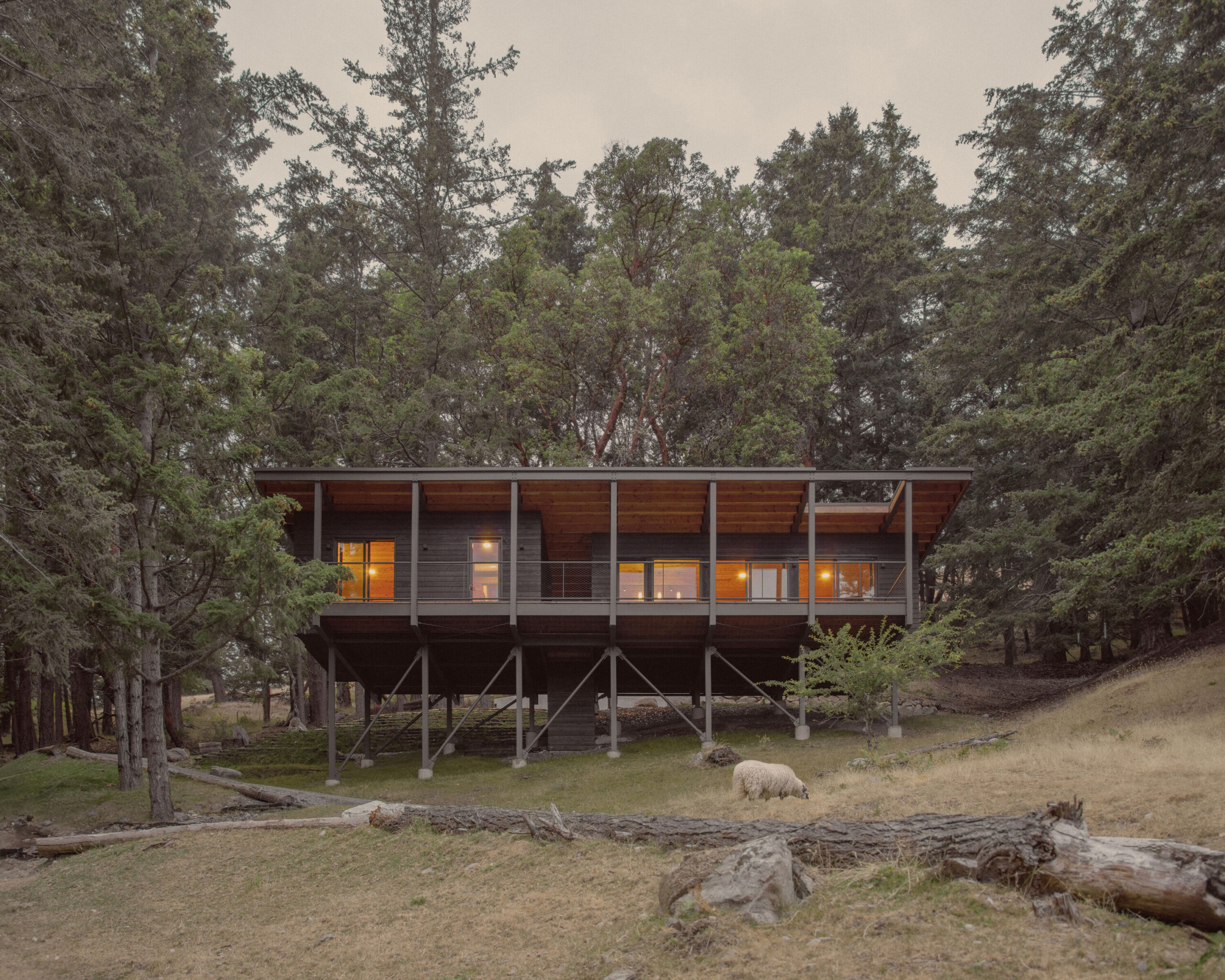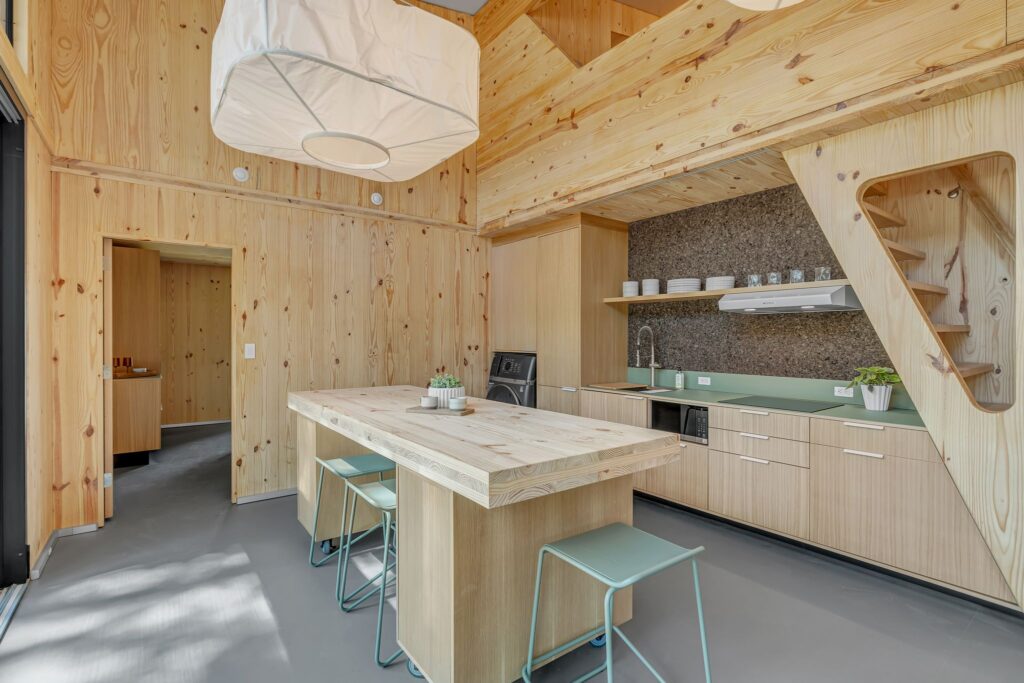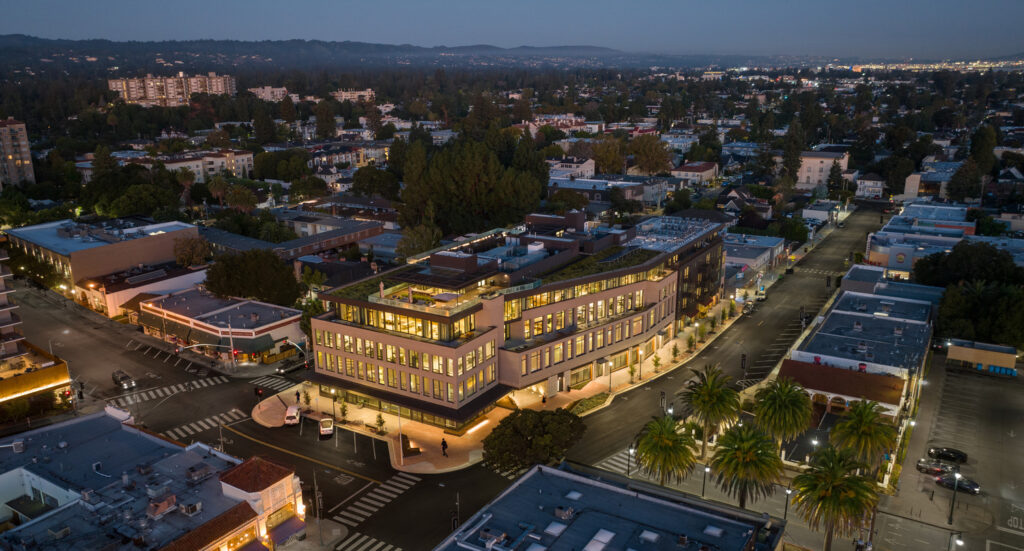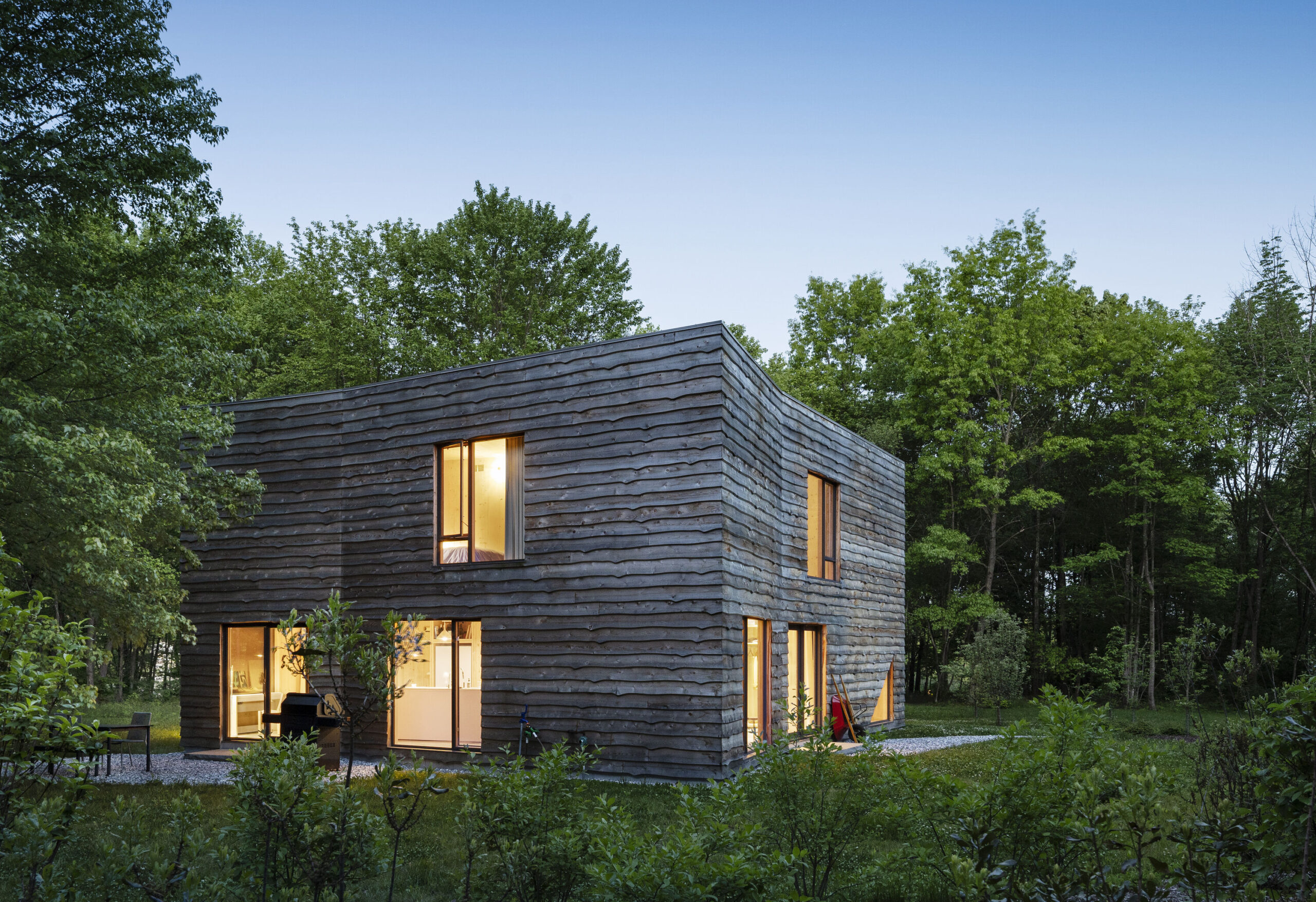Light-Frame Construction, Single-Family Home
Swampy Hollow
How to Create an Extraordinary Screened Porch with Conventional Wood Framing
This BLDUS-designed outdoor living project offers spatial sophistication and structural simplicity.
In a sense, the Swampy Hollow addition to a 1990s builder-grade home in East Hampton, New York, is a simple project. “It’s just a screen porch,” says the architect, Andrew Linn. But the straightforward demeanor of the design belies its spatial, material, and technical sophistication.
The 250-square-foot porch creates something extraordinary using dimensional lumber. Designed by Washington, D.C.-based BLDUS, where Linn is a Principal, the project’s name is derived from its site: The home is located in a hollow surrounded by trees on all sides. With this new, open-air addition, the client wanted to maintain visibility to the trees but did not want just a simple box. BLDUS’s solution—a 20-foot-tall gabled volume that floats free of the house—uses simple 2×4 studs to support a steeply sloped roof and mimic the tall straight trunks of the existing pine trees around the home.

Swampy Hollow

Swampy Hollow
The project’s distance from BLDUS’ office played a role in the architect’s decision to use standard light-frame wood construction. “We knew that we wouldn’t be visiting this construction site very frequently, so the construction is relatively conventional,” Linn says. “It’s a project that someone who knows how to frame a house would be able to build.”
And the framing is remarkably straightforward: The exterior walls are built with clear cedar 2×4 studs that support 2×12 Douglas fir rafters. The roof is topped with lighter-weight cedar shingles that have long been the default roofing material in the area. Each material was selected for its durability and its ready availability in a post-pandemic world. “It’s not that easy to source materials out there on the far eastern tip of Long Island,” Linn says. “We wanted it to be easy to build using components that we knew we could get our hands on easily.”

Swampy Hollow

Despite the porch’s small size, it packs a considerable variety of spatial experiences. Immediately against the existing house—and accessible from its kitchen—is a flat-roofed space that shelters a dining table under a skylight just 8-1/2-feet above the deck. The primary gathering space is under the steep 14:12 gable and functions as a screened, outdoor living room; both a fan overhead and a ventless fireplace at its center render the porch a year-round space. Overhead, the gable’s broad eaves don’t just protect the porch’s interior, but they also shelter cozy seating areas with built-in benches on the east side of the addition and a countertop workspace on the west. At night, integral LED lighting tucked behind the copper gutters provides an even, diffuse light to the porch’s interior and exterior.
Swampy Hollow is a testament to the power of small spaces, thoughtful design, and a palette of all-wood materials to upgrade any home’s outdoor living space. And BLDUS’s innovative design solution—fitting for a firm that was recently named to Architectural Record’s 2023 Design Vanguard —shows that smart and practical design using standard materials can yield extraordinary results.

Swampy Hollow
Project Details
- Project Name:
- Swampy Hollow
- Location:
- East Hampton, NY
- Type:
- Architect:
- Timber Products:














